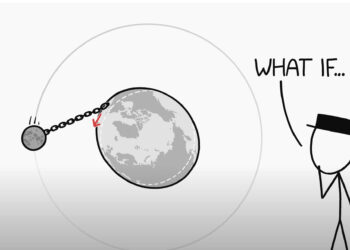
Last spring, we began coverage of an emerging problem for higher education — the observation that higher education itself might be a bubble economy, with tuition and fees rising much faster than inflation while the value of degrees seems to be diminishing in the market as administrators begin to outnumber faculty and jobs become scarcer, especially those that seem like solid careers based on educational attainment.
In the US, we are facing a fractious, polarized election filled with nonsense economics, a fiscal cliff for whoever wins the next presidential term, a re-emergence of social Darwinism, and a disturbing lack of agreement about government’s role in society, so there’s little chance of a macro solution emerging to reduce the pressure on the higher education bubble. And now, there are signs that pressures have already been lowered further than expected within the bubble.
Since last spring, an interesting and unexpected twist has emerged, namely the LIBOR scandal — a twist that suggests a more protracted tale ahead.
LIBOR is short for London interbank offered rate, or the rate at which banks will lend one another money. Barclay’s was found to have manipulated LIBOR in order to let its investment units make the right bets the next day; it paid hundreds of millions of dollars as punishment. Other fines will most certainly be meted out over the coming months to others involved in what is perhaps the most profound financial scandal ever, one that led to major market dysfunction by preventing the kinds of market failures you’d expect. For instance, one trader who placed a small bet on derivatives based on interest rate swings thought he’d hit the jackpot when Lehman Brothers went belly-up — an event that should have shot LIBOR through the roof as banks became skittish about lending one another money. But it didn’t happen. As this trader said:
They’re supposed to be reporting what other banks will lend them money at, and if I were a bank, I wouldn’t lend money to another bank at all that Monday.
Monday morning arrived. At 6 a.m., the new LIBOR number came out. And it was unchanged, as if nothing has happened. One of the biggest bank failures in history had just occurred, and you would never have known by looking at LIBOR.
The trader continued:
I was just dumbfounded that morning. I was like a deer in headlights. I can’t believe what happened. And then it was only with hindsight that it started to become clear that they had just lied about it.
By driving rates lower via LIBOR collusion, banks were able to make their books look better. How this affected state and municipal budgets involves a long story stretching back into the 1990s about variable-rate bonds, interest rate swaps, and so forth, but the bottom line is that ultimately the big banks found a way to reduce the risk for the cities through a guarantee of sorts. As part of this, the banks would make a payment to the city that was tied to LIBOR. If LIBOR went down, so did the city’s revenues. By manipulating LIBOR, millions of dollars never reached state and local coffers.
This deprived civic coffers at the same time that the federal government was pulling back on spending. Some of the responses to these shortfalls included cuts to education budgets.
The LIBOR scandal was silently sucking the air out of the higher education bubble. But more basic problems are what may prick the bubble — a problematic value proposition, too much reliance on soft money, too much discounting, lower yield on recruitment, and high expenses.
A recent story in the Chronicle of Higher Education reports that many universities are seeing their tuition revenues fall as fewer students come aboard and more discounting is required to get them:
Among the college officials I talked with this summer, some felt fortunate to “make their class” this fall, but only with freshman discount rates that approached 50 and 60 percent (that rate is the proportion of tuition revenue used for student aid). The average discount nationwide last year was 43 percent. There is no number that automatically triggers an alarm because in some ways the figure that matters more is net tuition revenue, but on many campuses that number is also not moving in a positive direction. In other words, colleges are spending more to enroll students and getting less cash from them.
What college administrators fear is that this is the effect of the economic collapse of 2008, which is finally hitting their student enrollments. If so, there are many other factors to worry about in addition to an inability or unwillingness to pay. Simply put, there are more choices now — online courses, smaller colleges, and more affordable state schools all provide much of the value without the onerous costs a college education came to represent. Combined with a long-term economic malaise, and there’s real cause for concern.
The LIBOR scandal has put many municipal and state economies at a disadvantage. Politics won’t help in the near-term. Paul Ryan, the Republican vice presidential running mate to presumptive nominee Mitt Romney, believes student aid is an “entitlement program” that puts unreasonable burdens on the general public. Unless the November election is a landslide for the Democrats, higher education is looking at more budget stalemates at best, and a severe shock to funding assumptions at worst.
Discussion
2 Thoughts on "Is the Higher Education Bubble About to Pop?"



